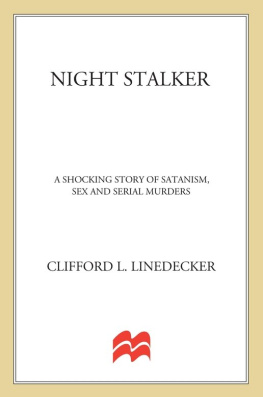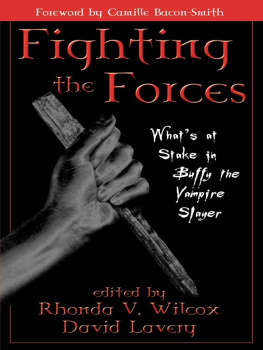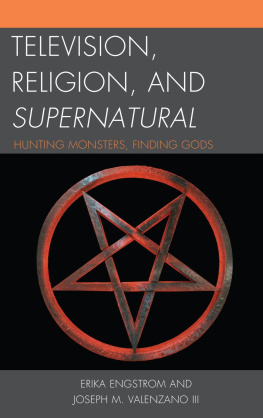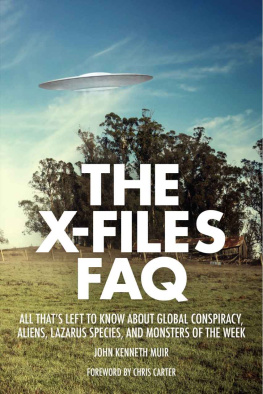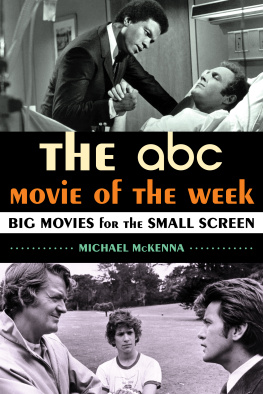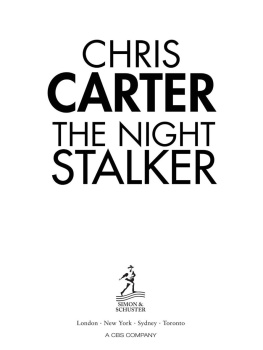
Praise for Kolchak: The Night Stalker
Phillips weaves together his authority as a leading horror scholar with his childhood love of Kolchak: The Night Stalker to produce a compelling analysis of this groundbreaking cult television classic. Positioning the show as a milestone of 1970s television and a vital forerunner to contemporary television horror, this book is a must-read for fans and scholars alike.
Stacey Abbott, professor of film and television, University of Roehampton UK, and author of Undead Apocalypse
A fascinating and highly engaging deep dive into the Kolchak mythos. Phillipss analysis of the production background and cultural significance of Kolchak: The Night Stalker makes for a supremely entertaining and informative read. An important addition to the growing field of television horror studies.
Jon Towlson, author of Subversive Horror Cinema
With Kolchak: The Night Stalker, Kendall Phillips presents a rigorous assessment of an important television show, the impact of which is still being felt today. Phillips writes of Kolchaks history, textual nuances, and legacy with exemplary clarity and attention to detail.
Johnny Walker, associate professor in the Department of Arts, Northumbria University
Kolchak: The Night Stalker

TV Milestones
Series Editor
Barry Keith Grant, Brock University
TV Milestones is part of the Contemporary Approaches to Film and Media Series.
A complete listing of the books in this series can be found online at wsupress.wayne.edu.
Kolchak: The Night Stalker
Kendall R. Phillips

Wayne State University Press
Detroit
Copyright 2022 by Wayne State University Press, Detroit, Michigan, 48201. All rights reserved. No part of this book may be reproduced without formal permission.
ISBN 978-0-8143-4904-5 (paperback)
ISBN 978-0-8143-4905-2 (e-book)
Library of Congress Control Number: 2022933652
Wayne State University Press rests on Waawiyaataanong, also referred to as Detroit, the ancestral and contemporary homeland of the Three Fires Confederacy. These sovereign lands were granted by the Ojibwe, Odawa, Potawatomi, and Wyandot Nations, in 1807, through the Treaty of Detroit. Wayne State University Press affirms Indigenous sovereignty and honors all tribes with a connection to Detroit. With our Native neighbors, the press works to advance educational equity and promote a better future for the earth and all people.
Wayne State University Press
Leonard N. Simons Building
4809 Woodward Avenue
Detroit, Michigan 48201-1309
Visit us online at wsupress.wayne.edu.
References to internet websites (URLs) were accurate at the time of writing. Neither the author nor Wayne State University Press is responsible for URLs that may have expired or changed since the manuscript was prepared.
Dedicated to Catherine, who always keeps the monsters at bay.
Contents
T his project was inspired by the incredible work and friendship of Julie Grossman and Will Scheibel, especially their TV Milestones volume on Twin Peaks. I also want to thank the incredibly supportive community of Kolchak fans who populate various social media sites and routinely post their commentary, speculations, and fan art. They were always there to inspire me and even answer a few questions. Particular thanks to Mark Dawidziak, who remains the undisputed expert on all things Kolchak. The final version of this manuscript was dramatically improved by the patient counsel of Marie Sweetman and the great folks at Wayne State University Press as well as two very thoughtful reviewers. Finally, I should note that this project would never have materialized without the support, guidance, and love of my first and best editor, and best friend in the world, my wife, Catherine Thomas.
Now here are the true facts: The Dark Corners of Network Television
B efore Buffy tried out for cheerleading, before Fox Mulder arrived at Quantico, and before George Freeman attempted to map Lovecraft Country, there was Kolchak. A curmudgeonly reporter in a perpetually rumpled seersucker suit, he had a wry sense of humor and a nose for finding the supernatural lurking in every corner. Carl Kolchak was first introduced into the American imagination by ABC in 1972 in what was for many years the highest rated television movie of all time, The Night Stalker. Another television movie followed in 1973 and then a television series appeared in 1974. While the series lasted for only twenty episodes, the influence of these tales of a Chicago-based investigative journalist and the horrifying creatures he faced each week can still be felt in American popular culture.
I first encountered Kolchak on CBS Late Night programming on May 25, 1979. My illicit love affair with CBSs night shift had begun through a case of mistaken identity. Perusing the television schedule in September of 1978, my nine-year-old eyes noted a listing for The New Avengers (ITV, 197677) airing at 10:30 p.m., a half hour after my appointed bedtime. The prospect of a television version of one of my favorite Marvel Comics titles led me to slip out of my bedroom and sneak into the living room, only to puzzle over how a group of British spies was connected to my beloved costumed superheroes. The science fiction adventures of John Steed and his younger compatriots eventually won me over and so began my weekly sojourn into the forbidden land of late-night television where shows had to be watched with the sound kept low to avoid alerting my slumbering parents. By May 1979, my late-night television habit had introduced me to a wide cast of characters ranging from Jim Rockford and Barnaby Jones to the Boston Celtics, when basketball playoffs were rebroadcast at night. And then I met Carl Kolchak. Kolchak: The Night Stalker (ABC, 197475) was a five-year-old canceled ABC television series by the time I found it on CBS and, in fairness, it was not my first introduction to serious horror. My brother had snuck me into a showing of John Carpenters Halloween (1978) when it was first in theaters. But Kolchak was my horror discovery. For several months, I enjoyed the Friday night ritual of sneaking into the living room with a pillow, my sleeping bag, and enough courage to make it through another terrifying episode.
Returning to the series for this current book was a welcome exercise in nostalgia, a return to a time when my biggest worry was being caught up after the lights-out order had been given. Of course, watching Kolchak with eyes seasoned by four more decades of life and a research agenda that has focused mainly on popular horror films has revealed some of the weaknesses I failed to pick up on while quivering in fear on the couch. The creature effects are regularly laughable and the plot holes sometimes glaring. The way Kolchak runs into some new supernatural entity on such a regular basis while never managing to retain a single shred of evidence leads my older self to wonder how he could have kept his job. The limitations of budgets and credulity do not, however, diminish my love for the series nor do they erase the fact that the series could, at times, achieve real frights. Somehow even now, the mix of infectious charm, humor, and occasional shocks makes the series enjoyable and even compelling.
Next page


